In the years I’ve been reporting from Parliament I’ve been itching to climb to the very top. Some politicians dream of clambering over the crushed dreams of their rivals up to the ninth floor of the Beehive.
Why stop there? I want to get onto the roof.
This week I finally ascended to a slightly less giddy height when I got onto the roof of Parliament House (the grey stone neo-classical edifice where all the legislative action happens). The opportunity was a visit to inspect Parliament’s new solar panels.
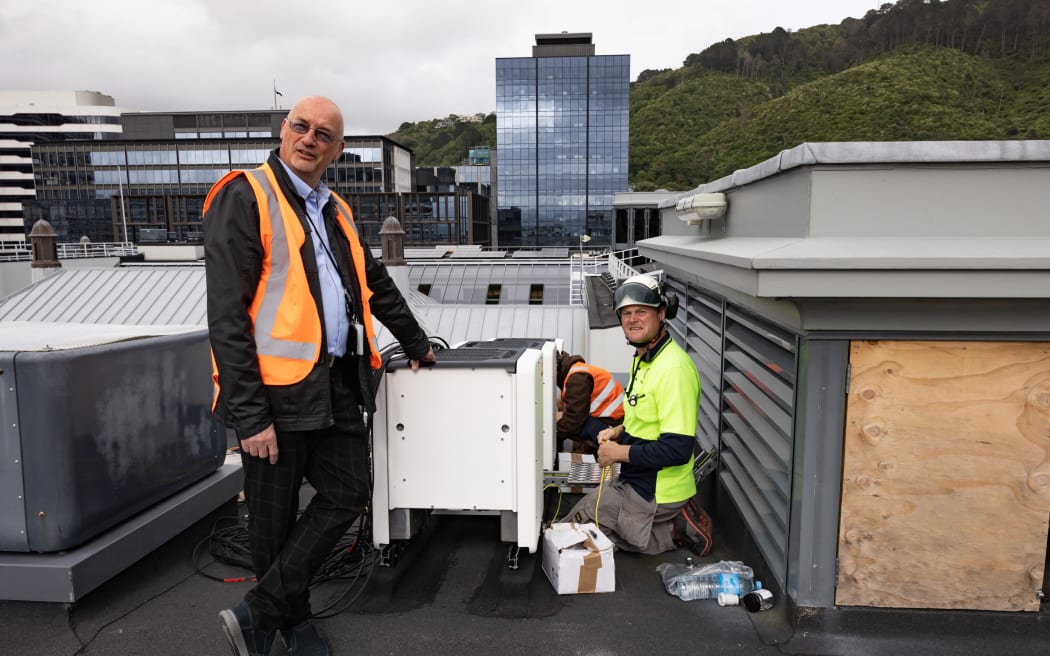
On the roof of Parliament House in Wellington James Hogg from Sunergise adjusts the new SMA inverters. Standing is Steve Barron, Parliament's solar panel project manager. Photo: VNP / Phil Smith
Parliament House is a big building with a lot of roof, and a lot of room for 561 surreptitious solar panels to lower its carbon footprint.
That many solar panels generate a lot of power, even under Wellington’s smothering grey blanket. They will also pay their way, saving the institution about $30,000 a year in power and 22 tonnes of carbon annually.
Up, up, up and...
Appropriately, you can reach the roof via an antique iron, spiral staircase. A pretty one with shiny black filigree - the kind that would look nice in your chateau library.
Up on Parliament’s roof the view is only so-so, but the wind is impressive. How could it not be - this is Wellington.
James Hogg from sunergise (who are installing the panels) agrees about the wind.
“It has been probably one of our largest challenges, on a day-to-day basis. Just making sure we’ve got the roof tied down and safe and sound.”
Steve Barron, the Project Manager for the Parliamentary Service laughs and calls that an understatement. They have somehow managed not to sail any solar panels across Wellington’s skyline.
It’s a summer morning in Wellington so up on the roof it is bleak, blustery and chilly. It does make you wonder why the roof isn’t festooned with windmills rather than solar panels; probably the lateral stress in a gale would reduce the building to its constituent bricks (or atoms).
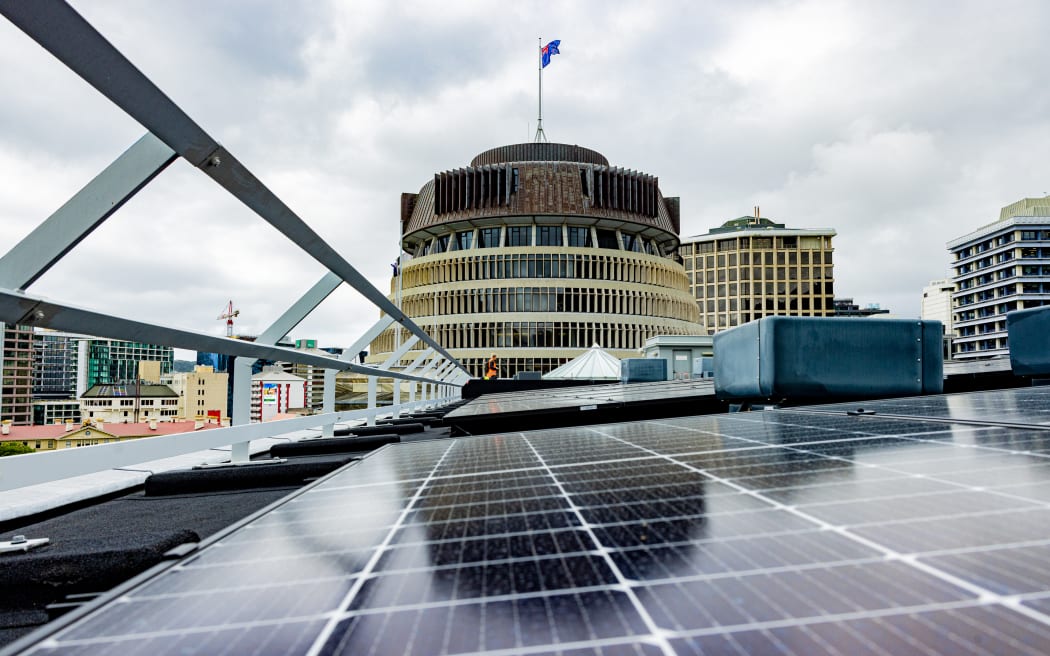
On the roof of Parliament House, the Beehive is reflected in one of the many ranks of new solar panels. Photo: VNP / Phil Smith
Before we get to the electrical details we shouldn’t ignore the view. Not many folk get to see up here.
Tinakori Hill (looming over Thorndon) looks lovely from here with its increasingly native hues. The Beehive is surprisingly close in all its concrete-gun-implacement-with-windows glory, (but no-one is looking out the windows for me to wave at).
The marvelous and much overlooked Parliamentary Library is exactly that. Its tall fake chimneys and unecesarry rooftop fripperies look even better from up here.
Beyond the precinct the mirror-windowed office blocks amplify the grey sky and make it seems that much bleaker.
Parliament above, the architectural, historic and the practical
It becomes very obvious when you look at it from the top that Parliament House has been crowned with a bonus floor of offices up at the original roof level - cannily added when it was refurbished in the late 90s. I think these are mostly opposition MPs’ offices at the moment. Some have skylights built too small for them to escape through.
The additions make for a jumbled roofline. It’s especially obvious where the original roofs of the two debating chambers protrude weirdly, down below the level of everything else.
Yes, Parliament House actually has two debating chambers (the House and the former Upper House - called the Legislative Council Chamber or LCC). The deliberative body abolished itself in the 1950s but the chamber persists and is used for state occasions, press conferences, real conferences, concerts and whatever requires a chamber music sized venue.
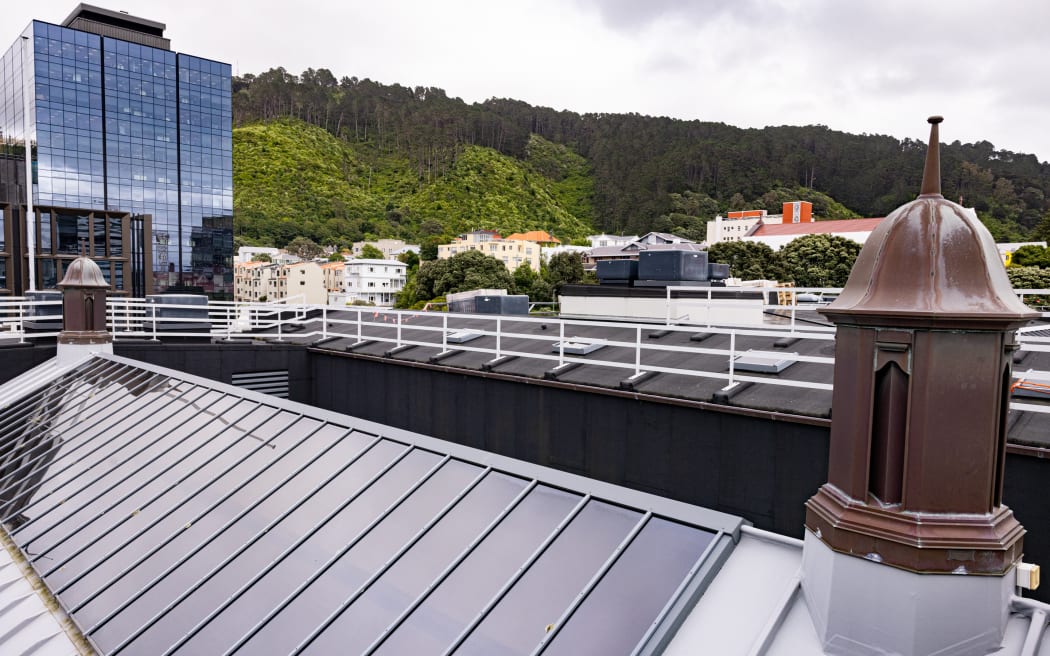
Crowning the glass roof of the Legislative Council Chamber are copper cupola vents - now purely decorative. As seen from the roof of Parliament House in Wellington. Tinakori Hill is in the distance. Photo: VNP / Phil Smith
Both the debating chambers have hipped roofs like an old church or possibly a barn; but which is more appropriate?
Seen from the inside, both chambers have wonderful stained glass ceiling panels, but seen from the outside only the LCC is capped with glass.
The House debating chamber’s hipped headpiece is solid metal, so the light streaming through its ceiling windows must be an electric deception (or magic).
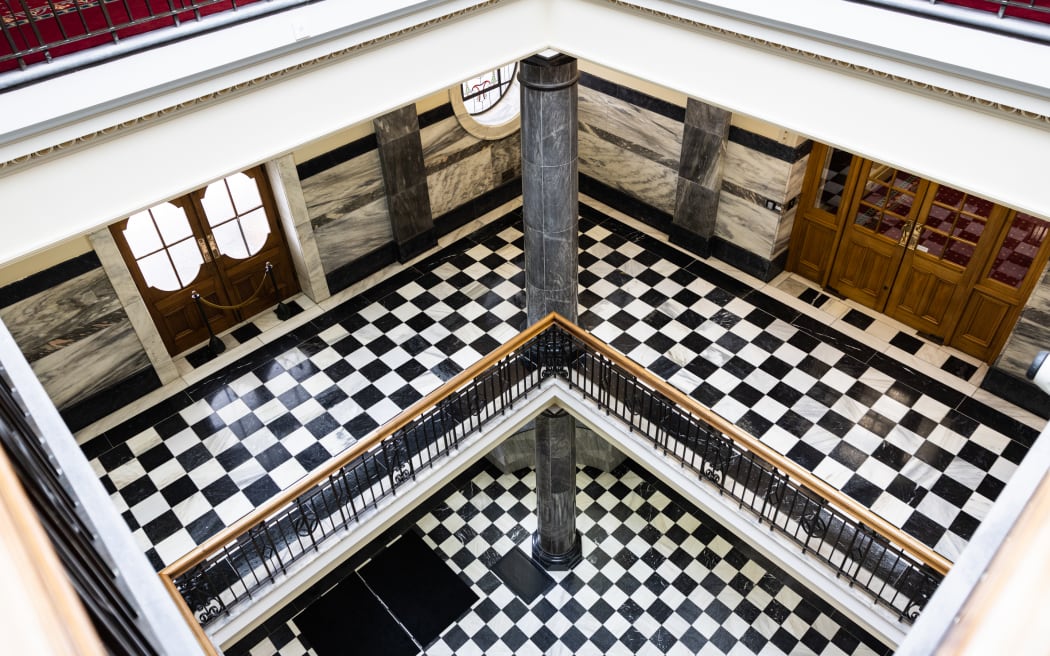
Looking down into the foyer atrium at Parliament House in Wellington. The area referred to as The Tiles where MPs are interviewed on their way to the debating chamber is at the bottom. Photo: VNP / Phil Smith
Down below the Parliament House foyer is a multi-level atrium that ends (quite gloriously) in a stained glass dome. It’s one of the nicest architectural moments in the precinct. Happily, the light that streams through that festive dome is obviously all natural; on the roof above the dome is a matching faceted-conical glass dome. Like a witches’ hat sitting atop a bowler.
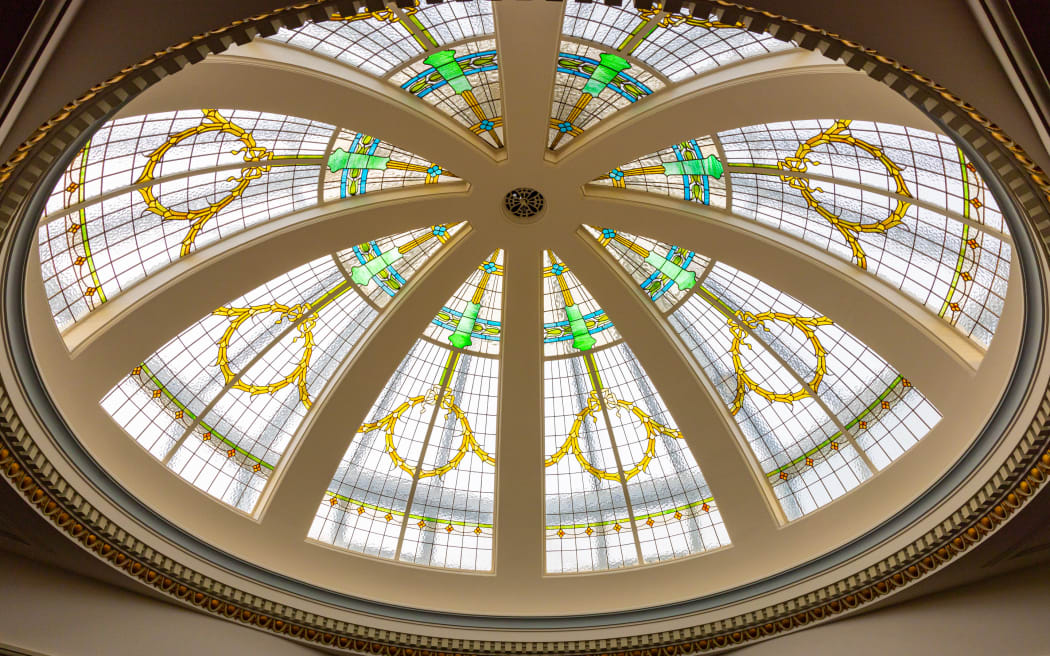
Looking up into the stained glass dome that tops the foyer atrium in Parliament House in Wellington. Photo: VNP / Phil Smith
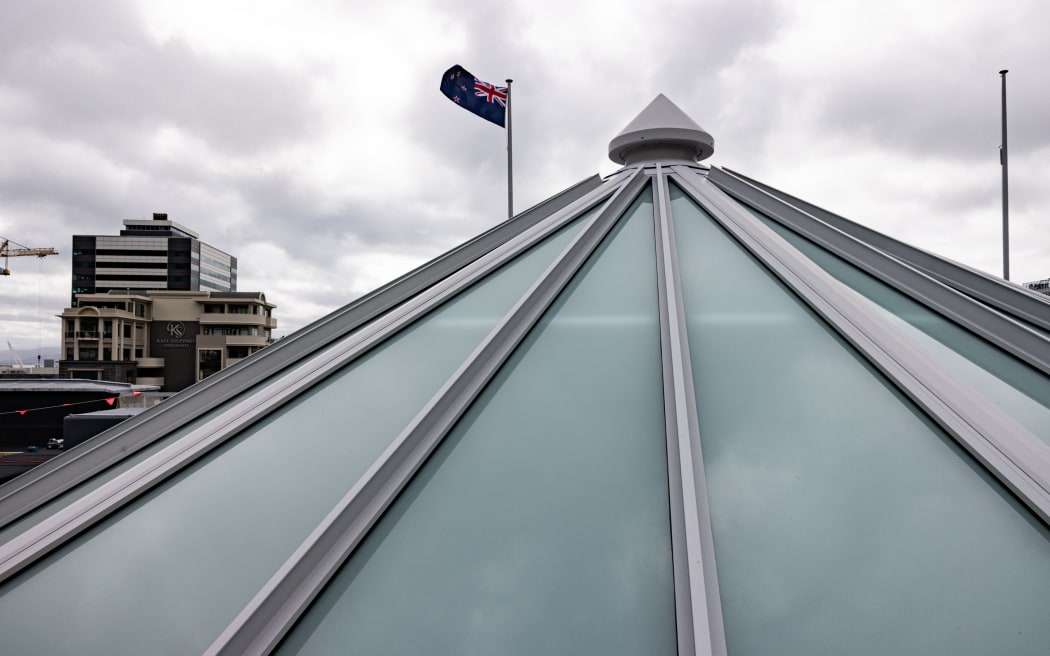
The faceted glass cupola on the roof of Parliament House which acts as protection for the stained glass dome. Photo: VNP / Phil Smith
Parliament has plenty of fascinating and odd architectural details. For example the copper cupolas that grace the debating chamber roofs (tipping the look firmly into barn territory). They would have been considered high-tech air conditioning when Parliament House was opened after World War One.
Those cupolas are apparently one of the many heritage features up here, a fact that must have made adding solar panels a bureaucratic minefield.
James Hogg says they worked closely with heritage people to avoid a visual impact. As a result the solar panels are low-reflective and black-edged. Black on a black roof.
There are also practical details - even a storage shed and a handy water tap, complete with a hose. Does someone climb to the roof to water a secret cannabis crop high above the place where crimes are defined, or maybe less ironic tomatoes?
Among all the skylights, the sloping glass atria roofs, domes and cupolas are now added more than five hundred solar panels, turning Wellington not exactly glittering sunlight into power.
It’s all even capable of feeding back into the national grid though they acknowledge that’s unlikely to happen until they squeeze out more energy saving inside.
In Wellington you can squeeze 200Kw of power out of 500 odd solar panels. In sunny Gisborne I imagine it overloading the national grid - and yes, that’s just summer yearning talking.
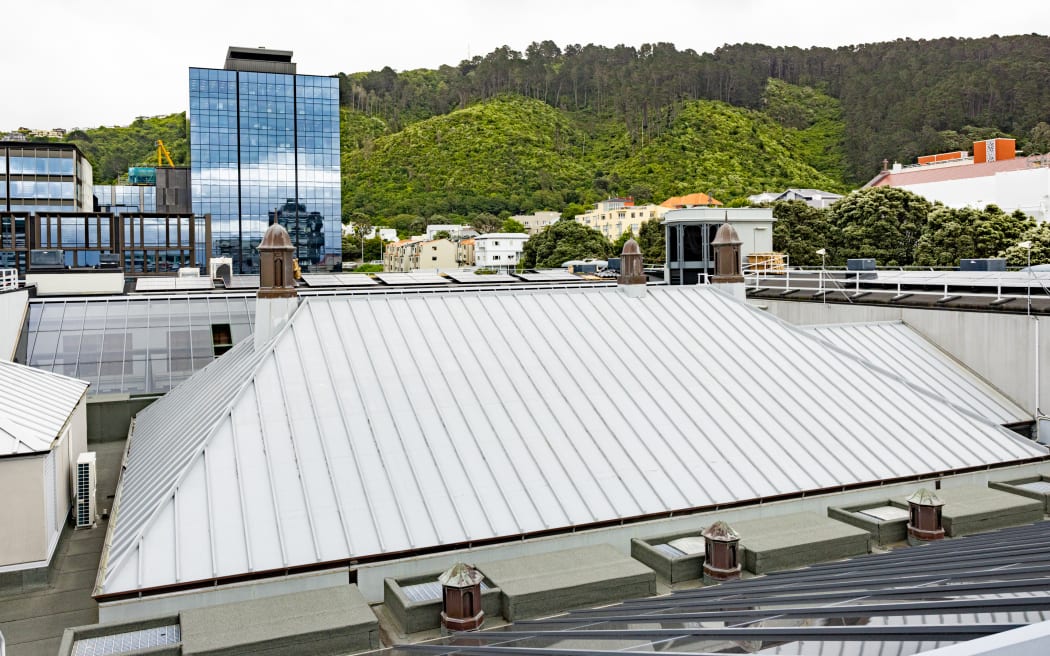
The hipped roof of Parliament's debating chamber, complete with decorative copper air vents. Photo: VNP / Phil Smith
The electric details
The details of the solar array are:
- 561 solar panels
- 200 kilowatts - DC output
- $575,000 - expected outlay
- $31,000 - annual savings
- 22 tonnes of carbon equivalent
- 25 year lifespan (approx)
- 2½ kilometers of cabling (linking the panels to the SMA inverters), plus more cabling to feed it all down to the switchboards.
And in related greening efforts:
- 20 Electric Vehicle chargers are now installed in Parliament’s basement carpark
- A move to LED lighting
- A new wooden office building for MPs (where the current outdoor carpark is) will achieve the highest Greenstar sustainability rating.
The physical aspects of Parliament are managed by the Parliament Service the Chief Executive of which is Rafael Gonzalez-Montero. He notes that Parliament includes more than 1800 staff usually spread across three buildings on precinct, and “needs a significant amount of power to operate. These solar panels will reduce the amount of fossil fuels Parliament relies on, which means we can decrease our carbon footprint and impact on the environment.”
To draw attention to the impact they are also installing screens in the Beehive’s reception area “to display the panels’ output and show how much electricity is being produced in real time.”


